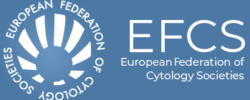The diagnostic categories are the following:
TIR 1. NON DIAGNOSTIC
The “non diagnostic” reports should not exceed 20% of the FNC (anyway it is recommended that they represent no more than 15% of the totality). They can be classified as inadequate and/or non representative. This rate varies depending on technical factors. By definition a sample is inadequate when biased by smearing and/or fixing and/or staining errors, whereas a sample is defined “non representative” when a number of cells insufficient for a diagnosis is collected from the lesion.
The pathologist should indicate the inadequacy or non representativity of the sample in the cytologic report. Its causes should possibly be clarified in the report.
A sample correctly smeared, fixed and stained is defined adequate.
A sample with at least 6 groups of 10-20 well-preserved epithelial cells from the lesion can be considered representative. The cytologic diagnosis should be made only on representative and adequate samples.
Operative suggestion. FNC repetition after at least one month from the previous one, according to the clinician’s opinion
Some cases morphologically defined as non representative can be included in the TIR 2 category if the clinical setting is evaluated. These cases are the following:
a) abundant and homogeneous colloid with scattered thyrocytes aspirated from colloid nodules or cysts;
b) only lymphocytes in clinically diagnosed Hashimoto thyroiditis
c) red blood cells, necrosis and macrophages from haemorrhagic pseudocysts
If a solid part remains after emptying a cystic lesion under ultrasonographic guidance, it should be immediately re-aspirated. US is fundamental to guide the needle into the solid component.
